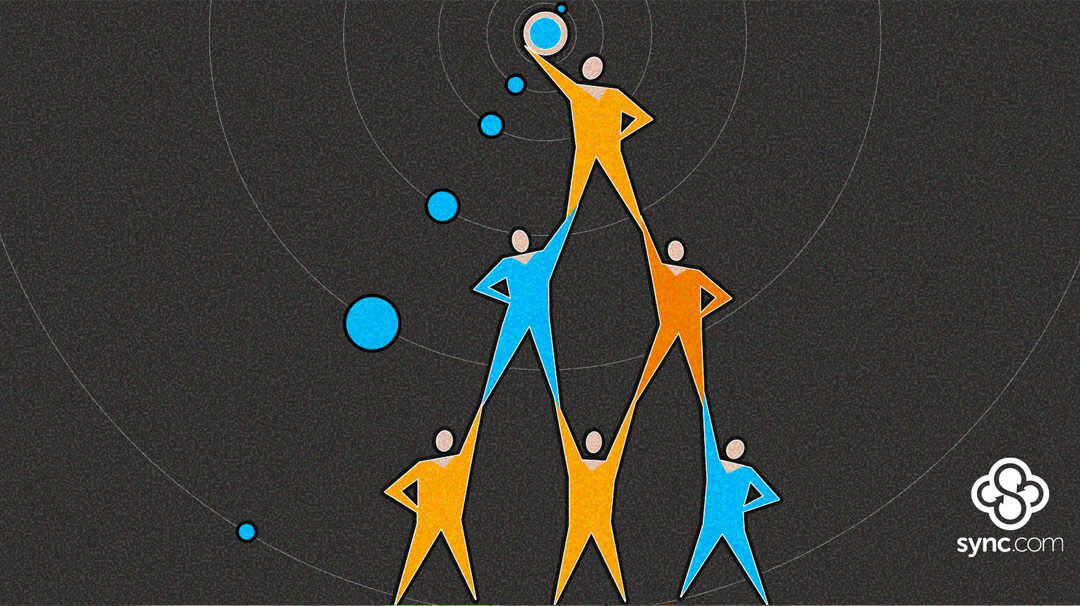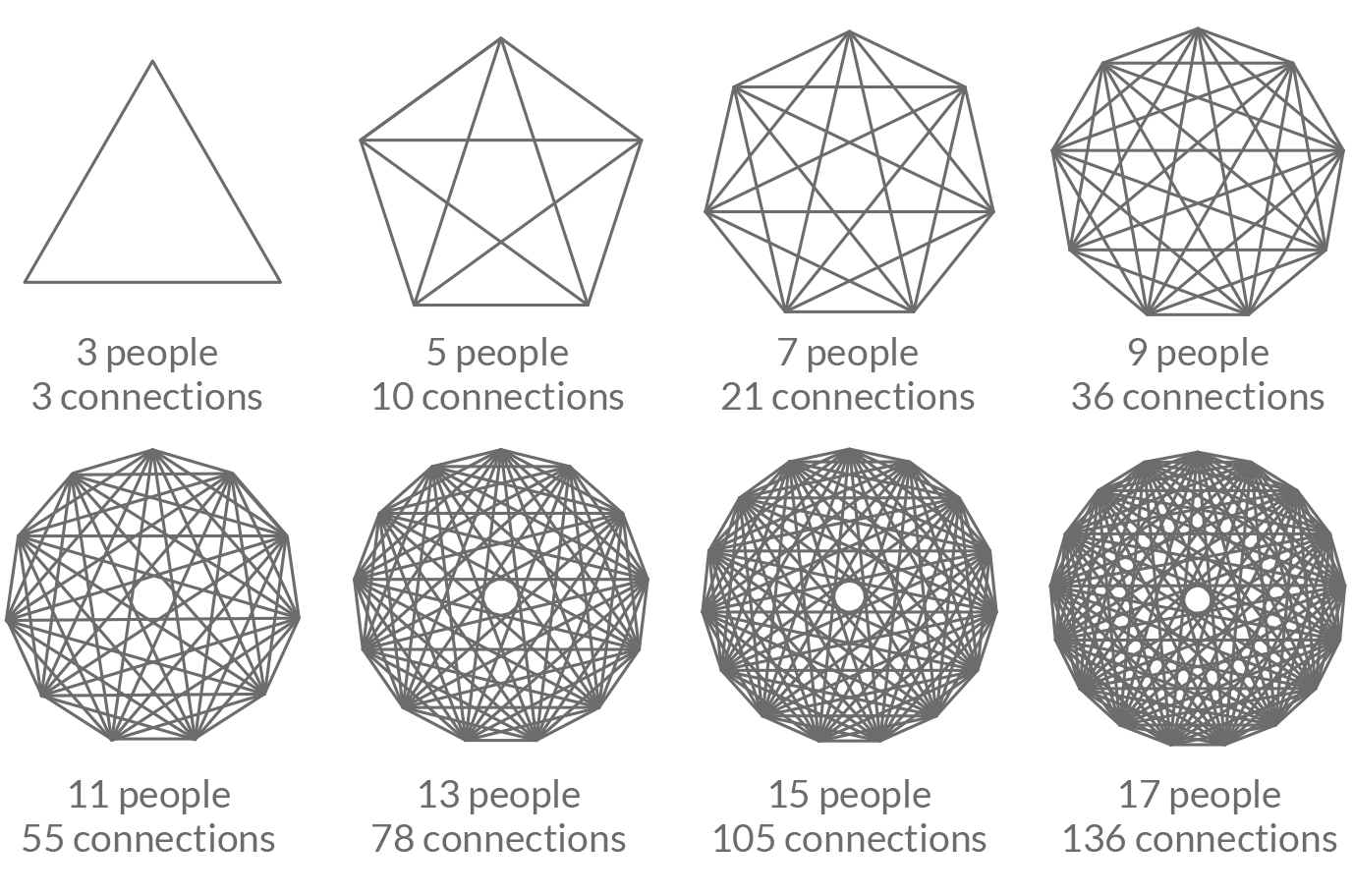How to Prevent Burnout—and Build a Thriving Team
by Kristen Marano on Jan 28, 2021 8:35:27 AM

Leaders, not workers, are responsible to manage organizational stress. Here are three steps to start.
While reviewing our team performance this past year, something stood out: by December, typically a time to feel stressed, we were energized and gaining momentum in ways we hadn’t in the last 12 months. We had overcome obstacles that could have pulled us apart and pushed us in the wrong direction. We were creating engaging content to help individuals and teams get in sync. We were thriving. But, how?
We dug deep and learned that we took the time with care and curiosity to understand each other’s personalities, concerns, and needs. We were able to overcome challenges like
mounting work, demanding deadlines, and working remotely, together.
When I felt pressure to deliver a story within unrealistic timelines, I spoke up and explained my process as a writer. My team listened and understood, and I felt seen, heard, and valued. We adapted in realtime and tried our best to find solutions.
Without realizing it, we were building a plan to prevent burnout and create a healthy team environment. We managed our individual energy, made time for play, and learned to say ‘no.’ As organizations continue to face uncertainty, leaders need to carefully manage stress, so strain doesn’t lead to decreased productivity, performance, and loyalty.
While burnout isn’t new – psychologist Herbert Freudenberger identified the symptoms in 1980 – its prevalence in the workplace is growing. In 2019, the World Health Organization officially recognized burnout as an occupational phenomenon resulting from chronic workplace stress that hasn’t been successfully managed, like feelings of energy depletion or exhaustion; increased mental distance from one’s job, or feelings of negativism or cynicism related to one’s job; and reduced professional efficacy.
Burnout has long been treated as an individual issue, but it’s leaders who have the power to create an environment where people will thrive. “Teams are the mini-systems that can influence the workplace culture to reduce burnout, when they have the right tools,” said Paula Davis, author of the forthcoming book, Beating Burnout at Work: Why Teams Hold the Secret to Well-being and Resilience, in a conversation with Sync. “Teams that regularly communicate about important goals during key decision points, or upon completion of a project have higher levels of trust and less burnout.”
Leaders: here are three ways to start:
Manage Your Team’s Energy, Not Their Time
We don’t need to work more, to achieve more. We need to work less, to produce more. “We’re not 9 to 5 animals,” said Colleen Carney, director of the Sleep and Depression Laboratory at Ryerson University, when we spoke recently. “We need to think biologically about our work day,” said Carney, who helps workplace teams design their days for peak performance.
She goes back to basics: if someone on your team is a night owl, they have optimal alertness later in the afternoon and evening. They’ll want to switch meetings, emails and mundane work during sub-optimal times and focus on creative work during their optimal peak. For early birds, let them start at a time that feels good to tackle the hardest tasks of the day. They shouldn’t be made to feel guilty when they stop working early afternoon and switch to mundane work later in the day. Makes sense, right?
To put this concept in practice, leaders need to trust their team members, and give them the autonomy to choose their hours, when possible. The benchmark is whether work gets done to the standard and under realistic timelines. If the evidence starts to show that team members are happier, productive, and thriving together, it’s a basis to extend the practice to other teams within an organization.
“Teams that value and encourage balance and allow people to work with, rather than against their biological clocks can create productive environments, rather than burnout,” said Carney.
My peak performance to get critical thinking done is 2 to 6 p.m. I plan uninterrupted writing and editing during this time. I book meetings after 10 a.m., when my brain starts to wake up, and I use the morning to read, organize, and check emails. As long as our team is in sync – work is progressing and to our timelines, then it doesn’t matter what time everyone works.
Don’t overlook emotional energy.
What Carney reinforces is reflective of each person’s circadian rhythm. We also need to consider the emotional energy of team members and what the authors of Burnout: The Secret to Unlocking the Stress Cycle, sisters Emily and Amelia Nagoski call human giver syndrome: giving too much of your emotional energy away to others and becoming depleted and drained, a major signal for burnout.
Who are the people on your team that raise their hands to help with internal organizational tasks? Or the ones who think to give a card and gift when someone needs support?
These individuals, prone to putting people’s needs before their own, need to closely manage their energy cups: is the cup half-way or about to overflow? This measurement keeps team members aware of how much energy to preserve to enjoy and produce good work.
The Nagoski sisters also alerted me in their recent podcast with American Vulnerability Researcher Brene Brown, that our bodies hold emotion and energy. We need to learn to pay attention to what our bodies tell us they need. If you feel a pit in your stomach when asked to do something, that’s a signal to say ‘no,’ and suggest a time when you might have more energy. “Exhaustion happens when we get stuck in an emotion,” say the Nagoski sisters in their book. “Emotions have a beginning, middle, and end and without being able to complete the biological stress cycle, emotion continues to live in our bodies.”
If someone says yes to a task they don’t have time for, stress will get stuck and build up the next time someone asks for something. Stress can build into resentment and a cycle of negative and cynical behaviour begins, affecting work quality and output. When we know how to complete the cycle, like going for a walk after a stressful task, or talking to a partner or friend after a tense event, or letting out a big sigh, our bodies return to feeling relaxed.
Build Rest And Play Into The Work Day
Play doesn’t have to come at the end of the day. When we incorporate play into work hours, we give our brains and bodies a chance to rest, recharge, and return to tasks feeling refreshed.
“Even if you think you don’t have time for play, make time and you’ll be more productive,” said Carney. “Prevent yourself from play and the burnout, which can take the form of illness, will be more disruptive in the long run.”
What can rest as play look like? Encourage your team to try this routine: when finished a task, take a small break. Someone could stretch for 10 minutes. Listen to a favourite song. Call someone they love. Read a few pages from a book. Any small activity that gives distance from work and ushers in moments of joy is ideal. I like to read during the day, if only for five minutes, because I know by the time I get in bed, I’ll fall asleep.
“Fatigue management is related to activity,” said Carney. “If you want to prevent burnout and optimize energy, take breaks more often, particularly physical ones.” She encourages a lap around the house or outside, to renew energy and restore our bodies for sleep at night.
During periods where job demands outweigh the resources, be attentive to give time in lieu, or encourage breaks throughout the day. The longer people sit at their desks for hours in front of a screen, without recognition from a leader, the likelihood they’ll start to feel a mental distance from their roles and negativity towards their work.
I’ve had to help our team understand that working back-to-back days on an article isn’t going to create my best work. That means we need to incorporate “Kris rest time” into our editorial timelines, so I can leave my computer and walk in the forest – it’s my form of rest that will create space and perspective. The team understands that when I take a few extra days to clear my head, the work that I deliver will be stronger.
Give Your Team the Autonomy to Say ‘No’
Saying ‘no’ and accepting ‘no’ is about building boundaries and showing respect to each other. Allowing people to negotiate work under reasonable circumstances gives team members control of their roles and responsibilities; it’s an important exercise to reduce stress, because when the ability to say ‘no’ is taken away, resentment can build.
When a new task comes in, I look at our content timeline on my wall and I ask, “do I have the mental capacity and time to do this work well?” If I don’t then I say, ‘no,’ and I offer a timeline that will work. If the job demand outweighs the resources, then we have to consider other options like a contractor. The moment I or someone on the team gets inundated with work, we’ll make mistakes out of fatigue and stress. Some people will struggle to say ‘no,’ even when they should, like perfectionists, who are more prone to burnout. This exercise can help manage daily workload and guide decisions about new tasks:
- Every day when I get into the office, I flip the page on my yellow-lined notepad.
- I write three tasks – the hardest task of the day at the top, followed by two smaller tasks.
- I draw a line, and I add two to three administrative tasks.
When I finish these tasks, I’ve done enough for the day, and I give myself the permission to leave the office. They’re the most pressing tasks against deadlines and timelines to contribute to our bigger goals. Here are some guidelines I’ve used over the years:
- If only one meeting can happen today, which one is the most important?
- Can I tackle that other task tomorrow or the next day?
- Do I need to have email on my phone? If it’s necessary for urgent requests, hide the Gmail icon in another folder, to avoid checking after hours.

Don’t let your team get to the point of saying, “I need a break.” The moment team members feel too exhausted to get out of bed for work, is the moment stress has crept too far. There’s a question from American Entrepreneur Ben Horowitz’s book, The Hard Things About Hard Things: Building a Business When There Are No Easy Answers that guides our team’s work to discover and prevent issues before they build, “what are we not doing?” Teams can ask, “what are we not doing to keep healthy and thriving?” and work will be kept honest.
When teams are in sync, people feel energized to show up every day and contribute their best work. If you haven’t seen Disney’s Soul, watch it this weekend. The story is a genuine and timely reminder of spending time doing what you love and with a team who lifts you up. We need less tired, exhausted, and uninspired souls, and more energized, engaged, and soulful people to problem solve and lead at work and in their lives.
Leaders, you have the power to create this reality and influence change in your organizations. What’s more rewarding than hearing people say, “I enjoy my work, and I love the people I work with?” It’s time to get in sync.
- September 2025 (3)
- August 2025 (1)
- July 2025 (3)
- June 2025 (1)
- May 2025 (1)
- April 2025 (1)
- February 2025 (2)
- January 2025 (1)
- December 2024 (1)
- November 2024 (2)
- October 2024 (5)
- September 2024 (6)
- August 2024 (3)
- July 2024 (6)
- June 2024 (4)
- May 2024 (4)
- April 2024 (7)
- March 2024 (4)
- February 2024 (5)
- January 2024 (5)
- December 2023 (1)
- November 2023 (3)
- October 2023 (3)
- September 2023 (2)
- August 2023 (5)
- July 2023 (2)
- June 2023 (4)
- May 2023 (2)
- March 2023 (2)
- February 2023 (1)
- January 2023 (3)
- December 2022 (1)
- November 2022 (3)
- October 2022 (2)
- August 2022 (3)
- July 2022 (1)
- June 2022 (1)
- May 2022 (2)
- April 2022 (1)
- March 2022 (2)
- January 2022 (4)
- December 2021 (2)
- October 2021 (3)
- September 2021 (3)
- August 2021 (1)
- July 2021 (5)
- June 2021 (4)
- May 2021 (3)
- April 2021 (4)
- March 2021 (5)
- February 2021 (2)
- January 2021 (5)
- December 2020 (1)
- November 2020 (2)
- September 2020 (1)
- August 2020 (1)
- July 2020 (1)
- May 2020 (1)
- April 2020 (1)
- March 2020 (3)
- February 2020 (1)
- November 2019 (1)
- October 2019 (1)
- August 2019 (1)
- May 2019 (1)
- April 2019 (1)
- February 2019 (1)
- January 2019 (2)
- December 2018 (1)
- October 2018 (2)
- September 2018 (4)
- June 2018 (1)
- May 2018 (1)
- March 2018 (1)
- January 2018 (2)
- December 2017 (2)
- November 2017 (2)
- September 2017 (1)
- August 2017 (2)
- May 2017 (2)
- April 2017 (1)
- January 2017 (2)
- July 2016 (3)
- June 2016 (3)
- February 2016 (1)
- November 2015 (1)
- September 2015 (1)
- August 2015 (4)
- May 2015 (4)
- January 2015 (2)
- October 2014 (1)
- September 2014 (1)
- August 2014 (2)
- July 2014 (5)
- June 2014 (2)
- March 2014 (1)
- December 2013 (1)
- October 2013 (1)
- September 2013 (1)
- July 2013 (4)
- June 2013 (2)
- April 2013 (1)
- February 2013 (1)
- January 2013 (1)
Subscribe by email
You May Also Like
These Related Articles

Feeling Overwhelmed? Here’s how to get Through the Week

How to Build a Winning Team at Work — Lessons from Women’s Soccer
